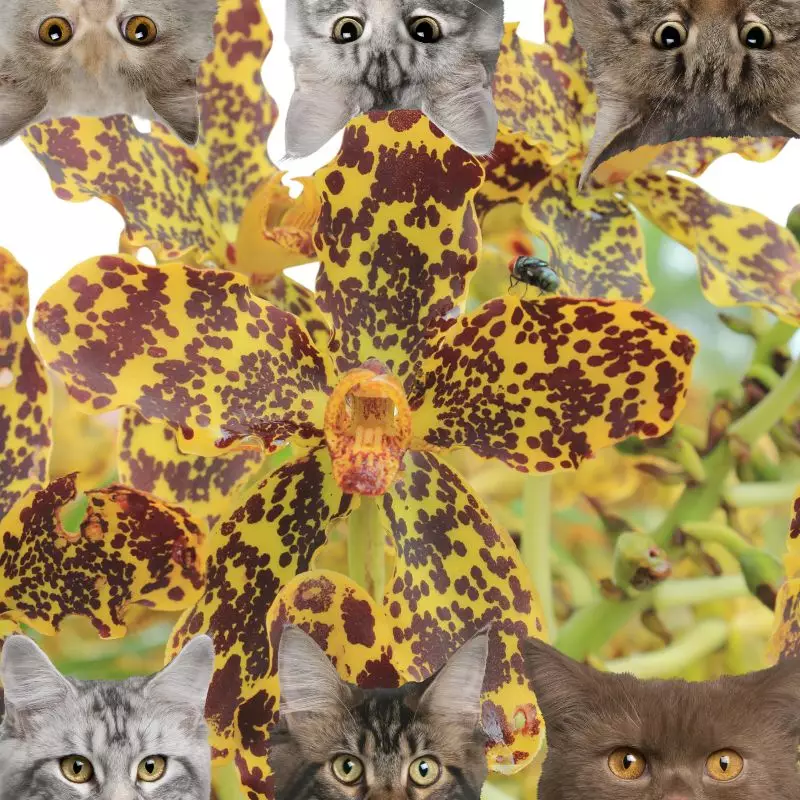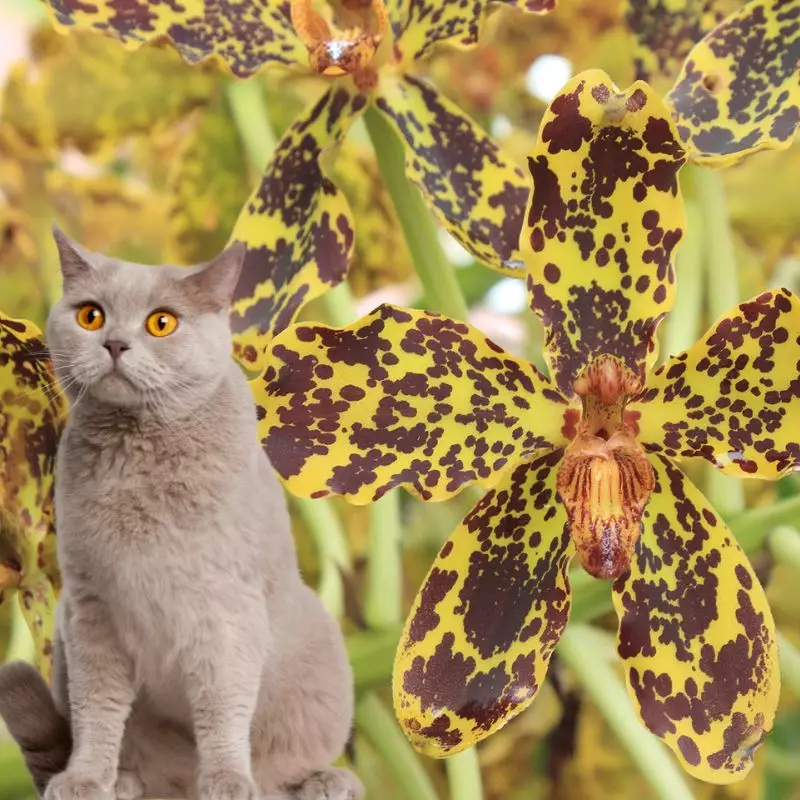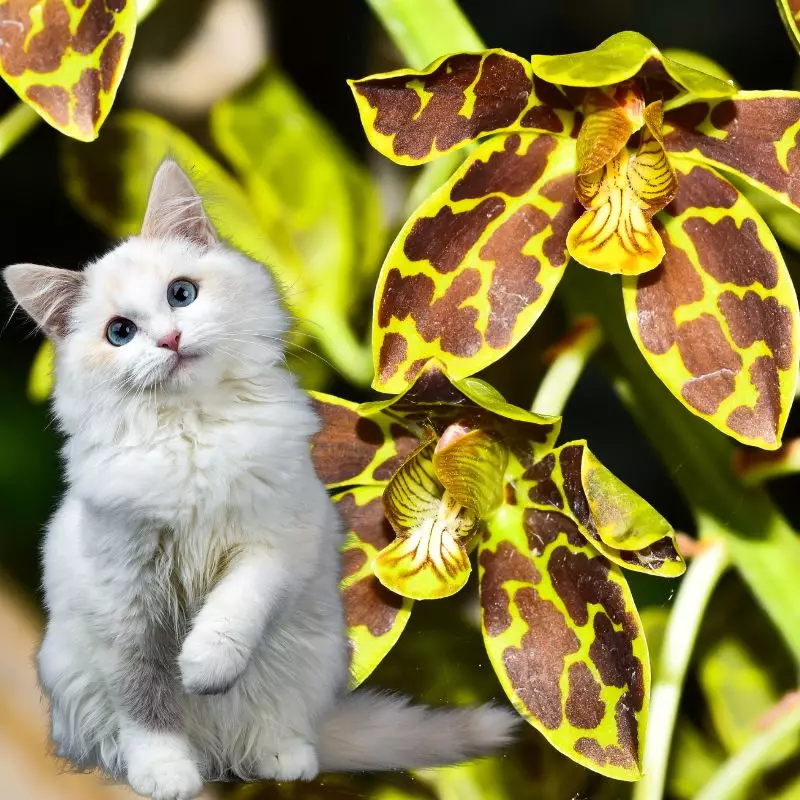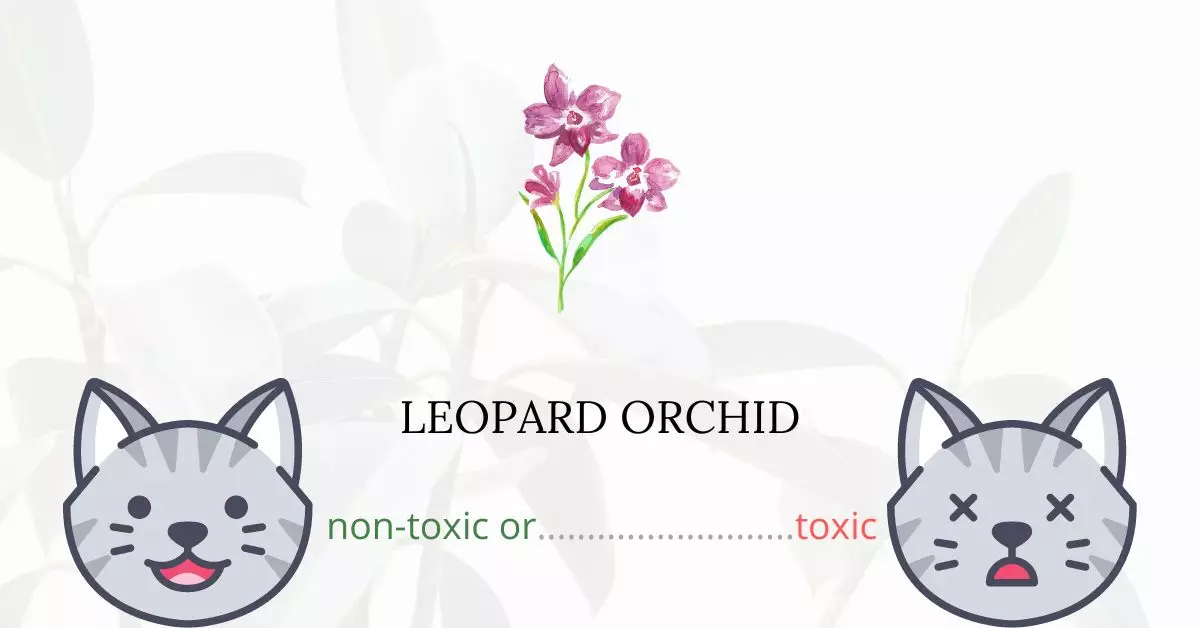Leopard orchids are not toxic for cats.
This article has been crafted in collaboration with a team of experienced DVMs (doctors of veterinary medicine). Their expertise ensures that we present accurate and up-to-date information on the potential risks associated with various plants, specifically the Leopard Orchids in this context. Additionally, our findings are reinforced by extensive research from high-authority sources, including the American Society for the Prevention of Cruelty to Animals (ASPCA) and PetMD.
According to the ASPCA, the leopard orchid is not only safe for cats but also for dogs and horses, categorizing it amongst the list of non-toxic plants. Thus, households with felines can comfortably introduce leopard orchids without apprehension.
Can Cats Eat Leopard Orchid or Tiger Orchid?

Cats can eat a tiny portion of leopard orchids. Similar to other orchids, leopard orchids do not have harmful elements that can cause life-threatening effects on our feline companions.
However, it is still best to exercise caution since cats are naturally carnivores. Plants of any kind should not be given to cats as a meal because this may result in indigestion and other GI problems.
Another thing to consider when your cats have eaten a plant is the chemicals used on the plant. Some plant care products may contain poisonous properties which can be lethal to cats when ingested or inhaled.
What is Leopard Orchid or Tiger Orchid?

Leopard orchid, scientifically known as Dendrobium gracilicaule, is an epiphytic or lithophytic shrub. It features cylindrical, yellowish-green pseudobulbs on top with three to seven leaves. The leaves of the leopard orchid are thin and dark green. Five to thirty drooping blossoms adorn the blossoming stem. The blooms are white, yellow, or greenish in hue, with large crimson streaks on the back in one variety.
Leopard orchids are also known as Blotched Cane Orchids and Tiger Orchids. It’s an epiphytic orchid from Australia.
These plants thrive in bright, indirect light, preferably from the west or south-facing window. These orchids appreciate high humidity and require continually moist soil.
Keeping Cats Away From Leopard Orchid or Tiger Orchid

You may place your orchids in a secured place like a room that your cat never visits. If you have orchids in your garden, you may try limiting your cats’ access outdoors. Keeping the mentally stimulated inside your house will prevent them from getting bored and wandering away.
Other methods that you can try are using materials like aluminum foil, double-sided tape, or sharp pebbles. Placing these items around your plants will prevent your cats from going near the plants.
Natural deterrents are also sold in most pet supply stores. You can spray this product on your plants to drive them away. These deterrents are usually made with natural ingredients that cats detest so they will likely avoid your plants when they smell them.
Plants to Avoid For Your Cats
If you are a cat owner and unsure if the plants growing in your yard are harmful to your cats, check out this list of toxic plants for cats. You can also check our list of non-toxic plants for cats.





